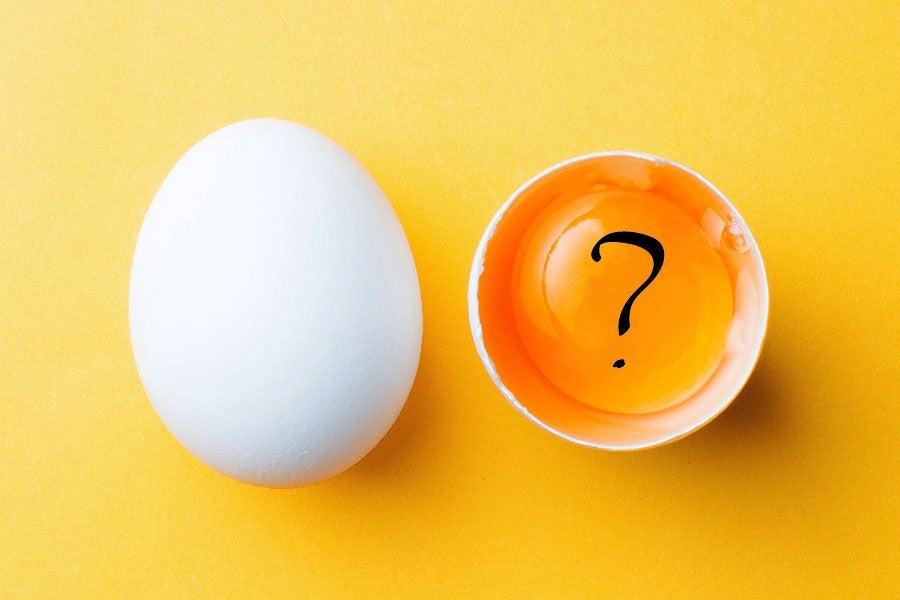I was recently informed that — despite generally being placed next to milk and yogurt at the grocery store — eggs aren’t actually dairy. Now, before that moment, I confess that I hadn’t really spent too much time wondering about the precise classification of our embryonic breakfast companions. But since that conversation, it’s been bugging the fuck out of me, and I simply must know, once and for all, what an egg actually is. So please, take this journey into madness with me.
On top of being wrongly categorized as — or at least, lumped in with — dairy by most stores, the waters are further muddied by organizations like PETA, who tend to push the notion that eggs are essentially chicken periods. This is a misguided comparison, since the reproductive cycle belonging to birds is very different to what happens in menstruating mammals. Yes, laying eggs and menstruation are both ways for the body to rid itself of unfertilized eggs, but in humans at least, menstruation is more about the discharge of the endometrium — the mucous membrane lining the uterus — which simply doesn’t occur in birds.
Then there’s the Department of Agriculture, which categorizes eggs alongside meat within their Food Guide Pyramid (presumably due to their high protein content). But that doesn’t seem quite right either, since the eggs we eat aren’t actually dead baby chicks — they’re unfertilised, meaning they wouldn’t hatch into a living being even if we didn’t boil, fry or poach them.
Since they’re clearly not vegetables — no, not even eggplants, genius — let’s consider some other options. According to Mark Hauber, editor in chief of The Auk: Ornithological Advances (a peer-reviewed scientific journal that covers the anatomy, behavior and distribution of birds) and author of The Book of Eggs, eggs might actually live in a category of their own:
“Most of the eggs that we eat are unfertilised eggs, which mean no tissue has been formed yet — no muscle, no skin, no nervous system. As such, we are only consuming the constituents of a single cell — lipids, proteins, and nucleic acids, as well as hormones and vitamins supplied by the laying hen.”
So the extremely disappointing answer to my question is that eggs are: (wait for it…)
A massive single cell.


